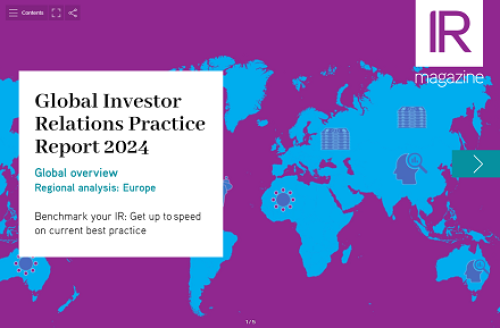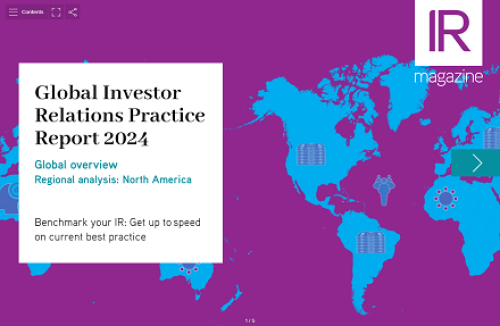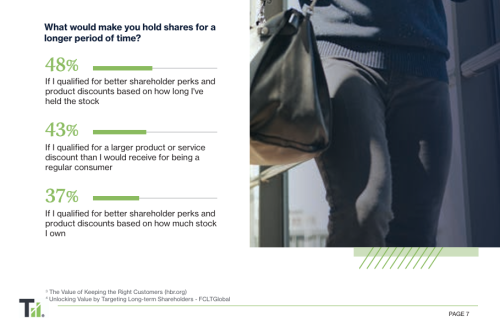Sponsored content
Most years have their stock market peaks and troughs, but looking at 2017, the view from Alexander Free, a senior analyst at Nasdaq Advisory Services in London, is that behind the more downbeat headlines has been a strong bubbling of positive activity taking place.
To prove the point, Free expounds on a list of numbers that reveal a bullish picture. Breaking this down, looking at European market performance in 2017, the top index has been the Stoxx Europe 600, which has risen 7 percent, and the top sector is the much discussed tech sector, which saw an increase of 19.7 percent. ‘This is very much part of the global trend in tech stocks – with majors including Apple, Amazon and Microsoft all performing well,’ notes Free.
Even more tellingly, in Europe economically sensitive stocks have performed strongly: with industrials and basic materials the second and third best performing behind tech. ‘This trend has been linked to the world and European economy – which are fairing strongly,’ comments Free.
In terms of country indices, the Austrian Traded Index was the top performing, while Italy’s FTSE MIB was up 15.8 percent, the German DAX 30 up 15.1 percent and France’s CAC 40 up 10.7 percent.
At the bottom, the second worst performing was the FTSE 100 – only up 3.5 percent since the start of the year. ‘It is the second bottom performer and only Luxembourg is worse,’ observes Free. Naturally, the specter of Brexit is haunting this situation. ‘Obviously the poor performance of the FTSE 100 is linked to the uncertainty around Brexit,’ says Free.
Contrasting with the global equity markets, the Stoxx Europe 600 is up 20 percent in dollar terms – outperforming the MSCI World Index, which was up 18.4 percent. There are two trends behind this. ‘This is due to the stronger euro versus the dollar,’ notes Free. ‘And the Dow Jones and the Nasdaq Composite reached historical highs this year – compare that with the Stoxx 600 – I believe that we are not at historical peaks for European equities.’
Looking at the wider European economic situation and outlook, Free is upbeat. ‘The Eurozone economic data has been very impressive: unemployment is at its lowest since 2009. In terms of consumer and wider economic confidence: this is at its highest since October 2000. And retail sales are at their highest in two years. GDP has seen 2.6 percent year-on-year growth in the third quarter. So all of the economic indicators in Europe are very positive.’
In terms of the political environment, it is still an upbeat picture but with more qualifications. ‘At the beginning of the year we had some uncertainty, which held back the European markets to some extent. Then we had the Dutch and French elections – and with the Macron victory in France there was relief in the European equity markets, to which we saw US investors pour heavily in,’ says Free.
On other politically fraught perspectives, Free has a balanced approach. ‘As far as the UK is concerned, at the first stage of Brexit negotiations a deal was reached, and though uncertainty remains, you could argue there is a slight reduction in uncertainty on that topic. There is also uncertainty in Spain with Catalonia, with a trend towards separation, but this is expected to stabilize, and there is the situation in Germany with a deal imminent. So I do not see a huge problem on these.’
Looking at the major impact on investor relations, Free cites the rise of passives. ‘The key trend over the last few years has been the rise of passive investing. In 2017, ETFs went above the $4trn mark, which is a significant milestone. All of the big flows of money are heading towards passives.’
A number of factors have contributed here, notes Free. ‘The lower levels of volatility have made it more difficult for active managers to outperform. Within this environment, governance is an increasingly important topic: with passives, as a differentiator, it is how they can impact their investments with strong corporate governance and voting at AGMs.
‘And IROs are looking to increase their efforts in terms of communication with these investors ahead of AGMs more generally throughout the whole year.’ This is indeed a key and important challenge for IROs.
Also in 2017 there have been major consolidations in the asset management arena, with the newly created Amundi Pioneer Investments, now Europe’s largest asset manager with €1.4trn in assets under management.
In the UK, there has been Standard Life and Aberdeen Asset Management coming together with €37bn in AUM. ‘We see these mergers as a result of the increasing importance of passive players with active managers having to pool their costs and have economies of scale,’ notes Free.
In discussing the big challenge of 2018: Mifid II, Free sums up the key challenges the regulation is likely to pose. ‘It is the unbundling of execution fees of research and corporate access services which will be the most important for the IR team.
‘We see this impacting three areas: research, now a separate cost which asset managers have to absorb themselves or charge to the end user, which in the long term will result in only the best sell-side analysts surviving. On corporate access, which is currently not so clear. And then the impact on execution will be interesting, as the whole situation is more transparent with the inducement of trade cut out.’










